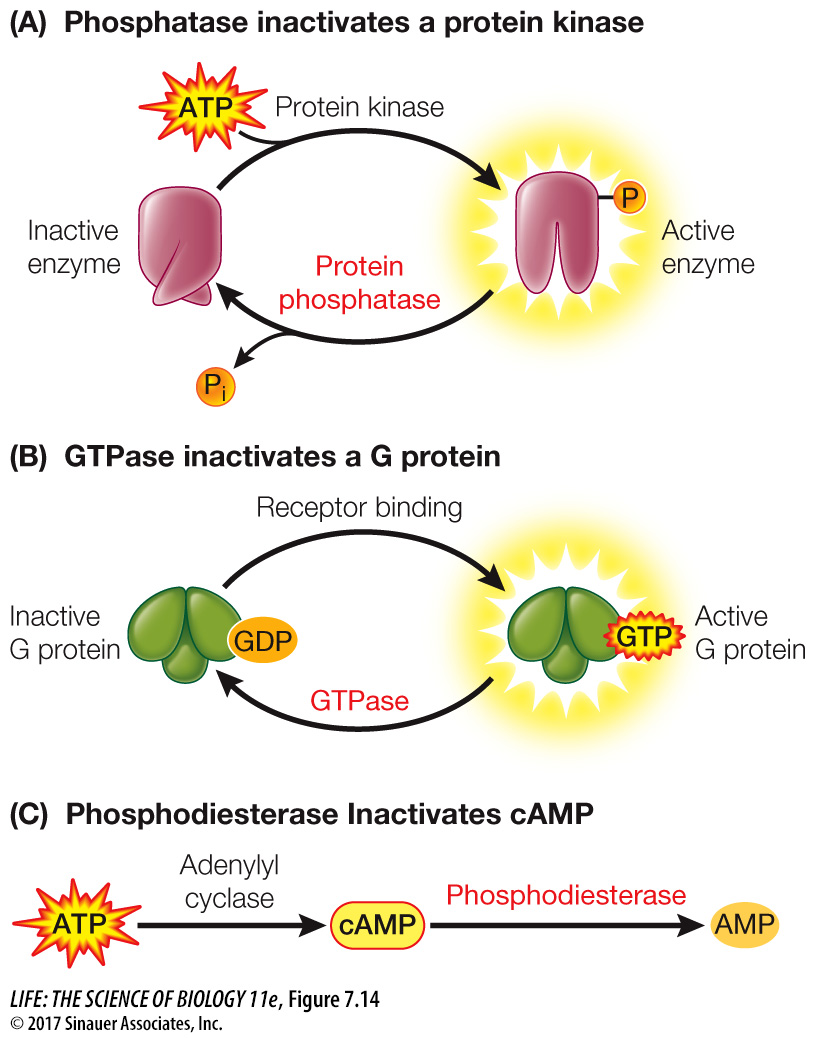Signal transduction is highly regulated
Cells can regulate the activity of a molecule involved in signal transduction. The concentration of NO, which breaks down quickly, can be regulated only by how much of it is made. By contrast, membrane pumps and ion channels regulate the cytosolic concentration of Ca2+, as you have seen. To regulate protein kinase cascades, G proteins, and cAMP, there are enzymes that inactivate the activated transducer (Figure 7.14).

The balance between the activities of enzymes that activate and inactivate transducers determines the ultimate cellular response to a signal. Cells can alter this balance in several ways:
Synthesis or breakdown of the enzymes. For example, synthesis of adenylyl cyclase (which synthesizes cAMP) and breakdown of phosphodiesterase (which breaks down cAMP) would tilt the balance in favor of more cAMP in the cell.
Activation or inhibition of the enzymes by other molecules. An example is the inhibition of phosphodiesterase by sildenafil.
Because cell signaling is so important in diseases such as cancer, a search is under way for new drugs that can modulate the activities of enzymes that participate in signal transduction pathways.